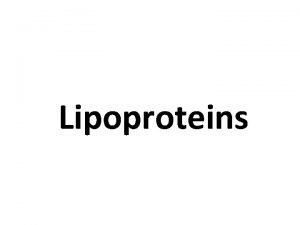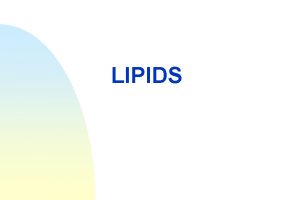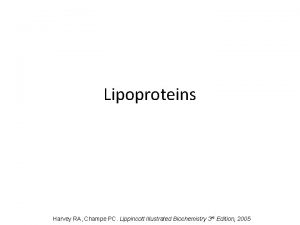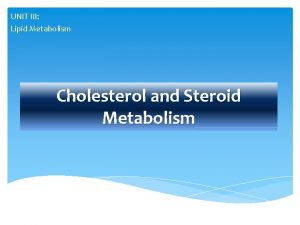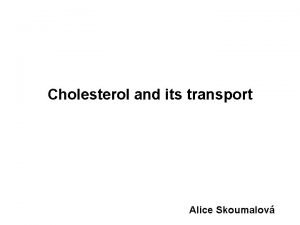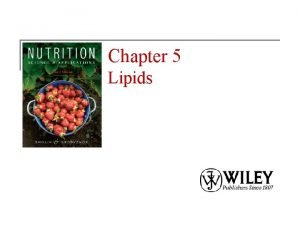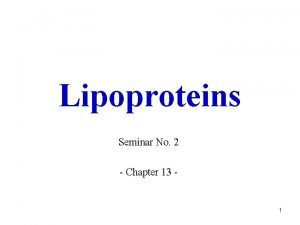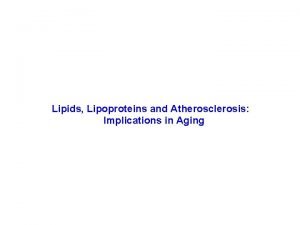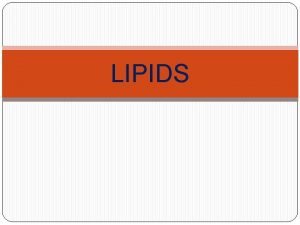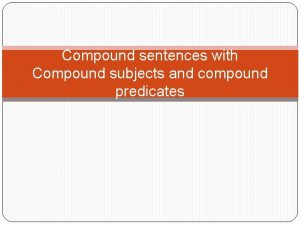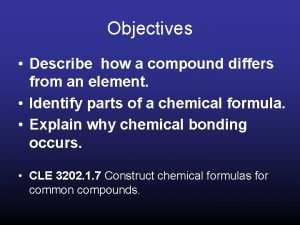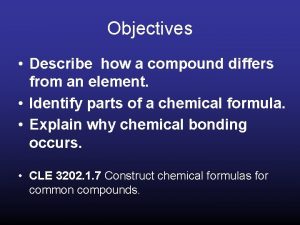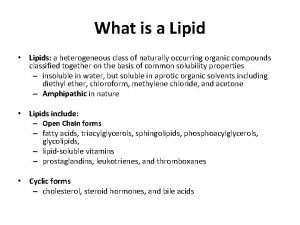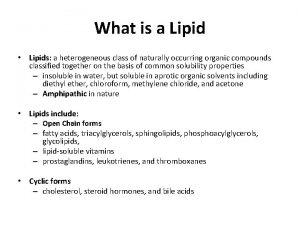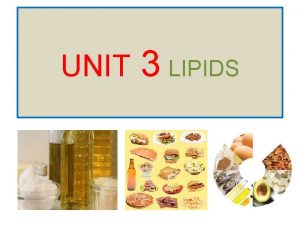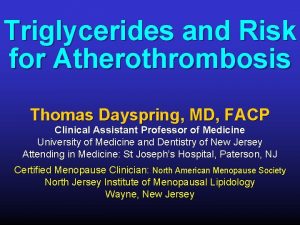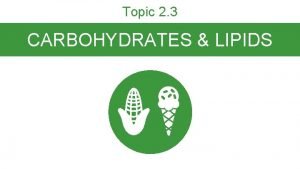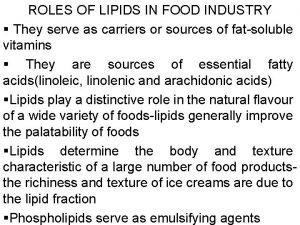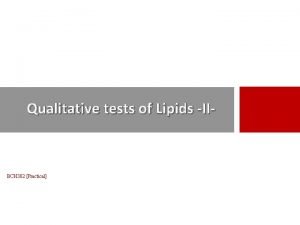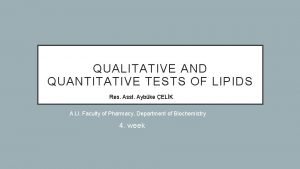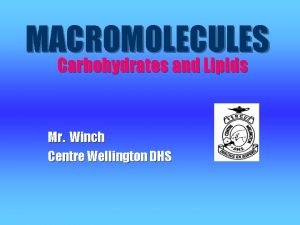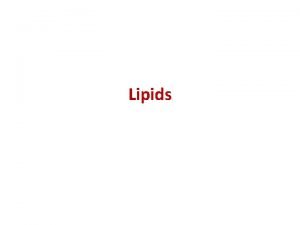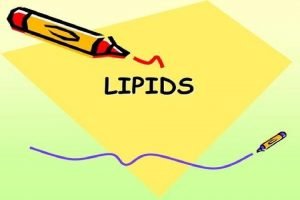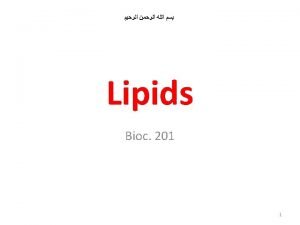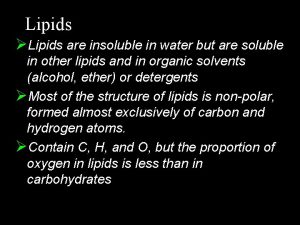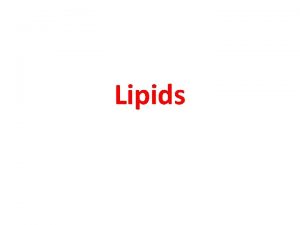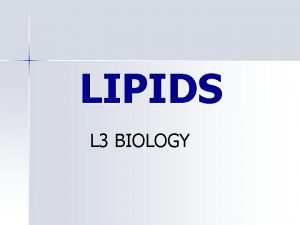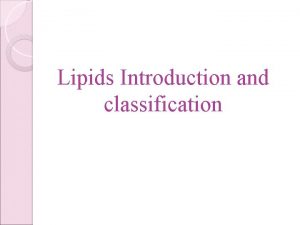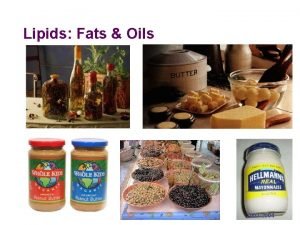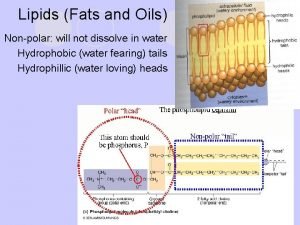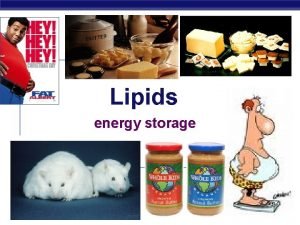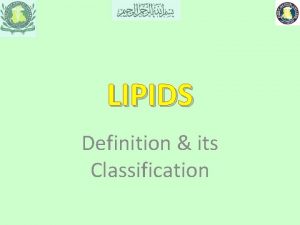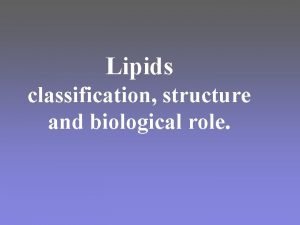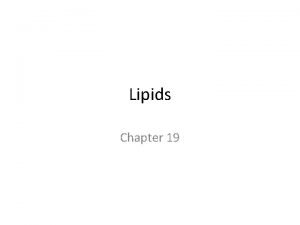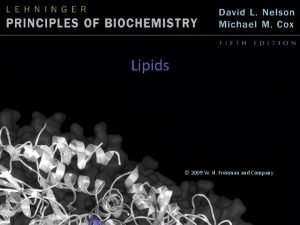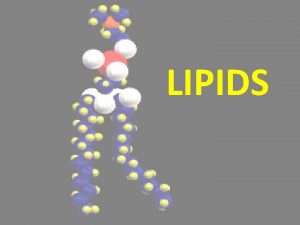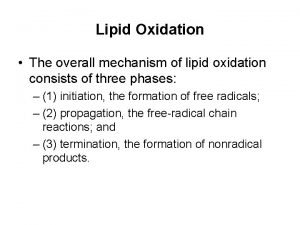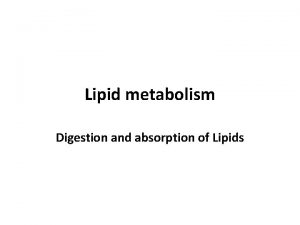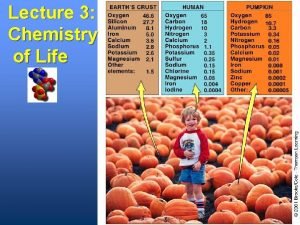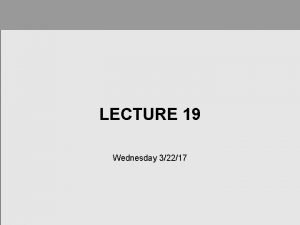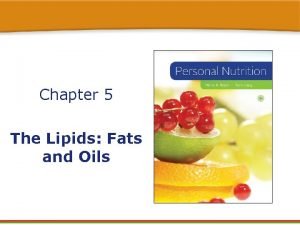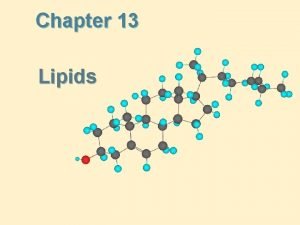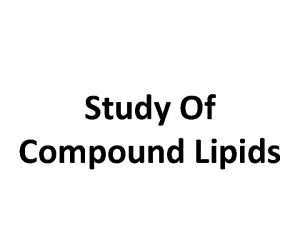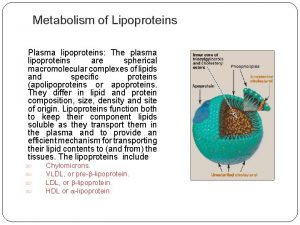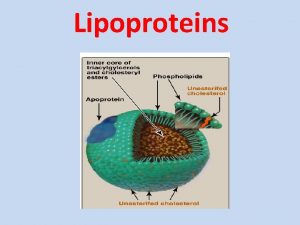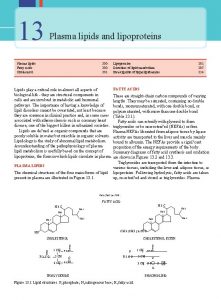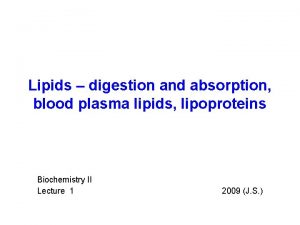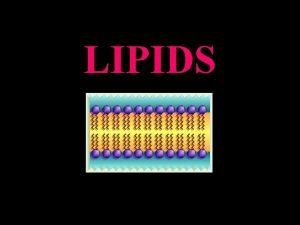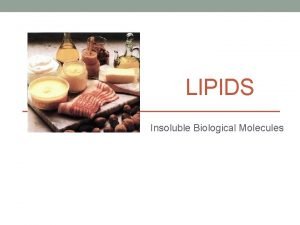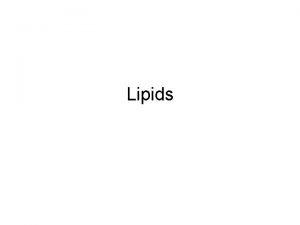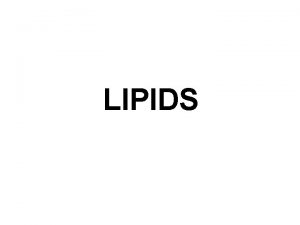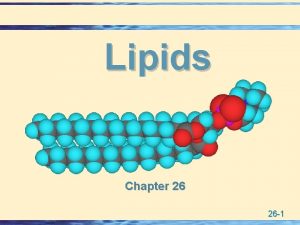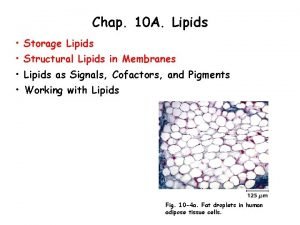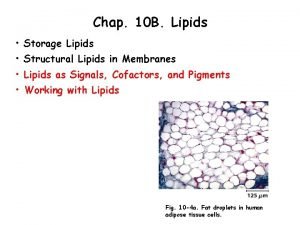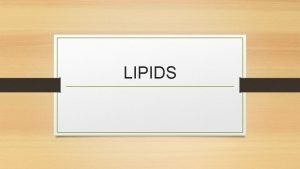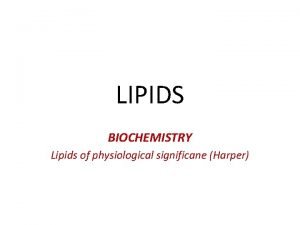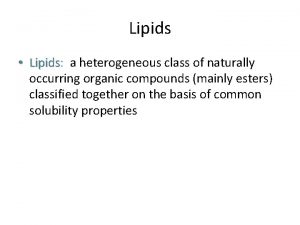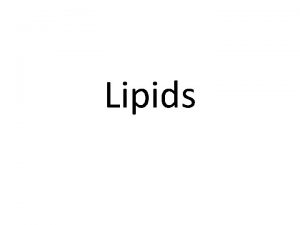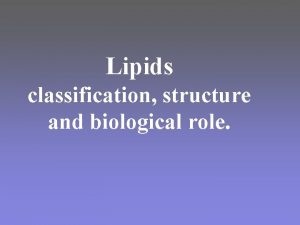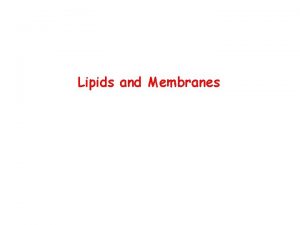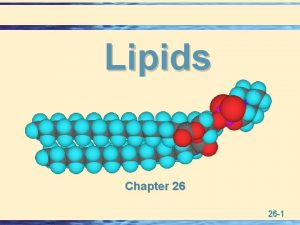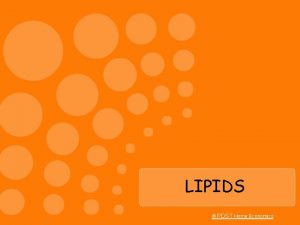Lipoproteins Lipoproteins Lipoproteins are types of Compound Lipids



















































- Slides: 51

Lipoproteins

Lipoproteins • Lipoproteins are types of Compound Lipids /Conjugated Proteins.

• Lipoproteins are macromolecules formed by aggregation of : • Lipids (Neutral and Amphipathic ) • Proteins( Apoprotein) in the human body.

• Lipoproteins acquire polarity (Hydrophilic Property)

• Lipoprotein serve as vehicles for transportation of Neutral and Amphipathic Lipids through aqueous media blood and lymph.

• Lipoproteins are biosynthesized within the cells of tissues. • By aggregation of various forms of Lipids and Apoproteins.

Structure Of Lipoproteins



Structure of Lipoproteins • The non polar /hydrophobic Lipids TAG and Cholesterol Ester are gathered centrally to form the core of Lipo. Protein particle. • At the periphery of Lipoprotein are Apoprotein and Amphipathic Lipids viz Phospholipids and Cholesterol.

• The Apoprotein and polar groups of Amphipathic Lipids impart hydrophilic property to Lipoprotein molecules • This helps in transportation of Lipids • From site of origin to site of utilization through blood.



Cholesterol Transported as Lipoprotein Complex (LDL)

Functions Of Lipoproteins • Lipoproteins serve as a vehicle in transportation of non polar Lipids • From the site of its biosynthesis to the site of utilization through aqueous media of blood or lymph.

Types Of Lipoproteins

• Depending upon the composition and other properties following are the types of Lipoproteins: – Chylomicrons (CM) – Very Low Density Lipoprotein (VLDL) – Low Density Lipoproteins (LDL) – High Density Lipoproteins (HDL) – Free Fatty acid -Albumin

Lipoproteins

Lipoproteins

Types of Lipoprotein Increasing density (all contain characteristic amounts TAG, cholesterol esters, phospholipids and Apoproteins – NMR Spectroscopy) Diameter Major Class Source and Function (nm) Apoliproteins Chylomicrons (CM) 500 Largest Intestine. Transport of dietary TAG A, B 48, C(I, III) E Very low density lipoproteins (VLDL) 43 Liver. Transport of endogenously synthesised TAG B 100, C(I, III) , E Low density lipoproteins (LDL) 22 Formed in circulation by partial breakdown of IDL. Delivers cholesterol to peripheral tissues B 100 High density lipoproteins (HDL) 8 Smallest Liver. Removes “used” cholesterol from tissues and takes it to liver. Donates apolipoproteins to CM and VLDL A, C(I, III), D, E

Features Chylomicrons VLDL HDL Site of Small Synthesis Intestine Hepatocytes Blood Nascent HDL Liver -80% Circulation Liver Intestine -20% From VLDL Lipids % Protein % Rich Lipid Form 99% 1% TAG Exogenous 92% 8% TAG Endogenous Associate d Apoprote in Transport From Transport To Apo B 48, Apo Apo B 100, CII , Apo E CI, Apo CII, Apo CI, E Apo CII and Apo E Dietary Lipids Liver Intestine Liver Extrahepatic Extrahepa Tissues tic Tissues 80% 20% Cholester ol 50% Phospholipids Apo A I, Apo A II Apo C I, Apo C II Apo D & Apo E Extrahepatic Tissues Liver

HDL Has Scavenging Role OR Reverse Transport of Cholesterol

HDL Is Associated With Enzyme LCAT Responsible For Cholesterol Esterification And Its Excretion


• HDL has scavenging role with protective mechanism. • HDL Transports Cholesterol from Extrahepatic tissues back to Liver for its excretion.

• HDL reduces risk of Atherosclerosis. • HDL clears the body Lipids and do not allow accumulation of Lipids in blood.

• Thus when the levels of HDL are within normal range • Cholesterol associated with HDL is termed as Good Cholesterol

• Based on Electrophoretic pattern the Lipoproteins are termed as: –LDL: Beta Lipoproteins –VLDL: Pre Beta Lipoproteins –HDL: Alpha Lipoproteins

Classification of plasma Lipoproteins according to their electrophoretic mobility (CM) a-lipoprotein (HDL) Pre-b-Lipoprotein (VLDL) b-lipoprotein (LDL) CM

Lipoprotein class Density Diameter (g/m. L) (nm) Protein % of dry wt Phospholi pids % Triacylglycerols % of dry wt HDL 1. 0631. 21 5 – 15 50 29 8 LDL 1. 019 – 1. 063 18 – 28 25 21 4 IDL 1. 0061. 019 25 - 50 18 22 31 VLDL 0. 95 – 1. 006 30 - 80 10 18 50 Chylomicrons < 0. 95 100 - 500 1 - 2 7 84



Density (g/ml) CM VLDL HDL < 0. 94 60002000 0. 94 -1. 006 -1. 063 -1. 210 600 250 70 -120 Total lipid (wt%) * 99 91 80 50 85 55 10 6 18 50 40 Diameter (Å) Triacylglycerol Cholesterol esters 3 2 7 11 7 Phospholipid 8 20 29 46 Apoprotein % 1 9 20 50 Cholesterol

Fatty acid compositions (wt% of the total) in the main lipids of human Lipoprotein Triacylglycerols Cholesterol Esters Fatty acid VLDL HDL VLDL 16: 0 18: 1 18: 2 27 3 45 16 20: 4 2 (n-6) Phospholipids LDL HDL VLDL HDL 23 3 47 16 23 4 44 16 12 1 26 52 11 1 22 60 11 1 22 55 34 15 12 20 36 14 12 19 32 14 12 21 5 8 6 7 6 14 13 16

Apoprotein The main properties of the Apoproteins. * Molecular weight Lipoprotein Function Lecithin: cholesterol acyltransferase (LCAT) activation. Main structural protein. Enhances hepatic lipase activity Apo A 1 28, 100 HDL Apo A 2 17, 400 HDL Apo A 4 46, 000 CHYLOMICRON(CM) Apo AV(5) 39, 000 HDL Apo B 48 241, 000 CHYLOMICRON Apo B 100 LDL, VLDL, CM Activates LCAT VLDL, CM Activates lipoprotein lipase Apo C 3 512, 000 7, 600 8, 900 8, 700 Enhances triacylglycerol uptake Derived from Apo B 100 – lacks the LDL receptor Binds to LDL receptor VLDL, CM Inhibits lipoprotein lipase Apo D 33, 000 HDL Associated with LCAT, progesterone binding Apo E 34, 000 HDL Apo(a) 300, 000 -800, 000 LDL, Lp(a) Apo C 1 Apo C 2 At least 3 forms. Binds to LDL receptor Linked by disulfide bond to apo B 100 and similar to

Disorders Of Lipoproteins



• Defect in Lipoprotein metabolism leads to Lipoprotein disorders: – Hyperlipoproteinemias – Hypolipoproteinemias



Lipoproteins Atherogenic Particles MEASUREMENTS: VLDLR TG-rich lipoproteins Apolipoprotein B Non-HDL-C IDL LDL Small, dense LDL

• Defect in the receptors of Lipoproteins on specific tissues • Leads to retention of specific Lipoproteins in the blood circulation.

• Abnormal high levels of LDL in blood is due to LDL receptor defect on extrahepatocytes bad to body.

• The Cholesterol associated to high LDL levels is said to be bad Cholesterol. • This increases the risk of Atherosclerosis , Ischemia, MI and Stroke.

• Recently evidenced high levels of blood HDL are also bad to body. • This increases the risk of Atherosclerosis , Ischemia, MI and Stroke.

Proteolipids/ Lipophilin

Proteolipids/ Lipophilin • Proteolipids are compound lipids which have more content of Proteins than Lipids. • Proteolipid is a transmembrane domain protein bound with Lipids.

Occurrence Of Proteolipids • Proteolipids are structural Lipids • Present on the extracellular side of the membrane. • Proteolipids are also present in Myelin Sheath.


 Antigentest åre
Antigentest åre Functions of lipoproteins
Functions of lipoproteins Definition of lipids
Definition of lipids Waxes
Waxes Lippincott
Lippincott Lipoproteins
Lipoproteins Lipoproteins
Lipoproteins Lipoproteins
Lipoproteins Lipoproteins
Lipoproteins Functions of lipoproteins
Functions of lipoproteins Triacylglycerols
Triacylglycerols Bruno dislikes sitting on the beach
Bruno dislikes sitting on the beach Compound subject
Compound subject Simple compound complex rules
Simple compound complex rules Simple subject and compound predicate
Simple subject and compound predicate A compound differs from an element in that a compound
A compound differs from an element in that a compound A compound differs from an element in that a compound
A compound differs from an element in that a compound Heterogeneous lipids
Heterogeneous lipids Heterogeneous lipids
Heterogeneous lipids Test for fat
Test for fat Fats and lipids
Fats and lipids Tom dayspring lipids
Tom dayspring lipids Carbohydrate vs lipid structure
Carbohydrate vs lipid structure Uses of lipids in food industry
Uses of lipids in food industry Qualitative tests for lipids
Qualitative tests for lipids Qualitative tests for lipids lab report
Qualitative tests for lipids lab report Saturated vs unsaturated fat
Saturated vs unsaturated fat Lipids made up of rigid carbon rings
Lipids made up of rigid carbon rings Classes of lipids
Classes of lipids V
V Fats, oils, and waxes
Fats, oils, and waxes Neutral fat
Neutral fat Are lipids insoluble in water
Are lipids insoluble in water Lipid precursor
Lipid precursor Lipids facts biology
Lipids facts biology Facts of lipids
Facts of lipids Are lipids non polar
Are lipids non polar Examples of lipids
Examples of lipids Are lipids hydrophobic
Are lipids hydrophobic Examples of lipids
Examples of lipids Examples of lipids
Examples of lipids Saponifiable and non saponifiable lipids
Saponifiable and non saponifiable lipids Classification of lipids flowchart
Classification of lipids flowchart Biological significance of lipids slideshare
Biological significance of lipids slideshare Carbohydrates elements present
Carbohydrates elements present Apa itu tbhq
Apa itu tbhq Digestion of lipids
Digestion of lipids Lipids made up of rigid carbon rings
Lipids made up of rigid carbon rings Wednesday two of the key
Wednesday two of the key Are fats and lipids the same thing
Are fats and lipids the same thing Lipids made up of rigid carbon rings
Lipids made up of rigid carbon rings Complex lipids
Complex lipids

